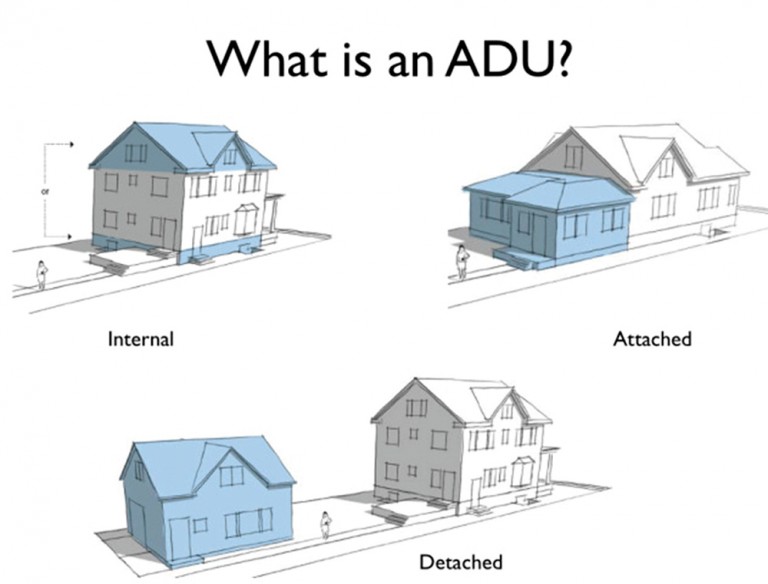By Michael V. Cusenza
Mayor Eric Adams on Monday announced multiple new tools to help homeowners create accessory dwelling units.
ADUs are defined as any secondary independent unit on the same property as a primary home, including backyard cottages and basement apartments with separate entrances. The new tools include a one-stop shop portal to remove bureaucratic red tape and new a $4 million grant funding to support an ADU pilot program.
According to the University of California-Berkeley’s Terner Center for Housing Innovation, ADUs have many advantages.
“They are cheaper to build than a classic single-family home, allow for flexible living arrangements for families, and can serve as a source of financial stability to homeowners, including and especially seniors living on fixed incomes,” Rocio Sanchez-Moyano and Carol Galante wrote in a study published in August 2016. However, Sanchez-Moyano and Galante noted, “zoning, excessive fees, and other regulatory barriers often limit a homeowner’s ability to build an ADU.”
Monday’s announcement arrived as the Adams administration aims to address the housing crisis with the “City of Yes for Housing Opportunity” proposal, which includes legalizing ADUs.
Adams said that the Plus One ADU pilot program provides up to $395,000 in funding to qualified homeowners through the City Department of Housing Preservation and Development and grant funding from New York State Homes and Community Renewal to build or convert an ADU on their property. Additionally, the program provides homeowners with financial and technical support, including predevelopment and construction resources. First launched in 2023, in its first two months, the pilot heard from more than 2,800 homeowners with nearly 80 percent of applicants reporting they were interested in improving their family’s finances or housing a family member with an ADU. The additional funding will allow up to 35 homeowners to add or convert a secondary home, as permitted under current zoning and building codes. To allow even more homeowners to benefit from an ADU, City of Yes for Housing Opportunity would permit one- or two-family homes in the five boroughs to add an accessory dwelling unit of up to 800 square feet, while adhering to building code and other city and state regulations.
The administration also announced plans to create a “one-stop shop” of resources to help New Yorkers add an ADU to their properties, including step-by-step guides to help homeowners navigate the ADU process. This resource will include, for the first time in NYC’s history, a library of pre-approved designs, which will streamline permit approvals for safe accessory homes and lower costs for homeowners. New York’s pre-approved ADU design library will follow proven models in cities like Los Angeles and Eugene, Ore.
The Adams administration is in the middle of public review for City of Yes for Housing Opportunity. The Department of City Planning estimates that the City of Yes plan could produce as many as 108,850 new homes over the next 15 years. In addition to the City of Yes plan, DCP is advancing several projects that, if adopted, would deliver more than 50,000 units over the next 15 years in Long Island City and Jamaica, the Metro North station area in the Bronx, Central Brooklyn, and Midtown South in Manhattan, Adams noted.

